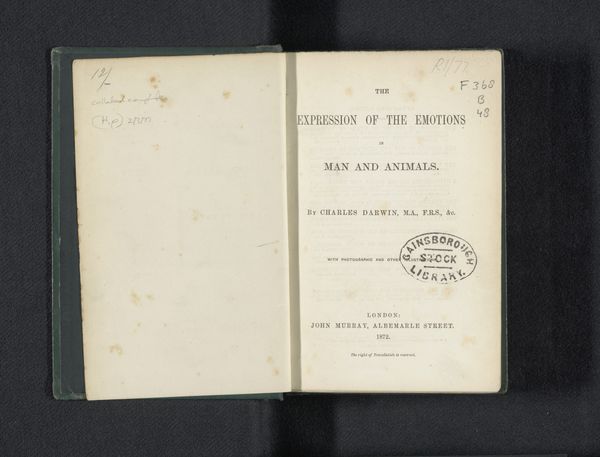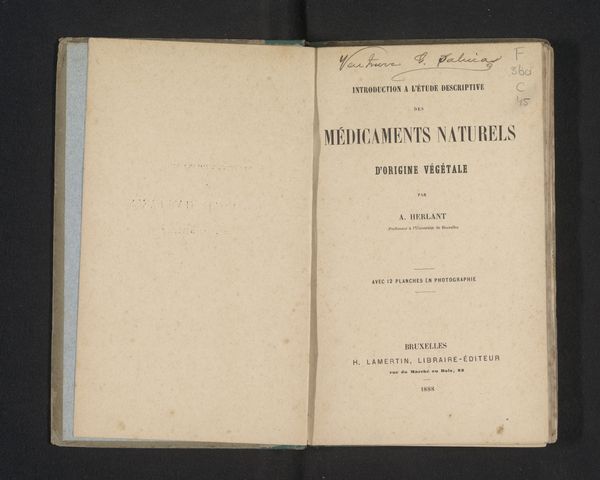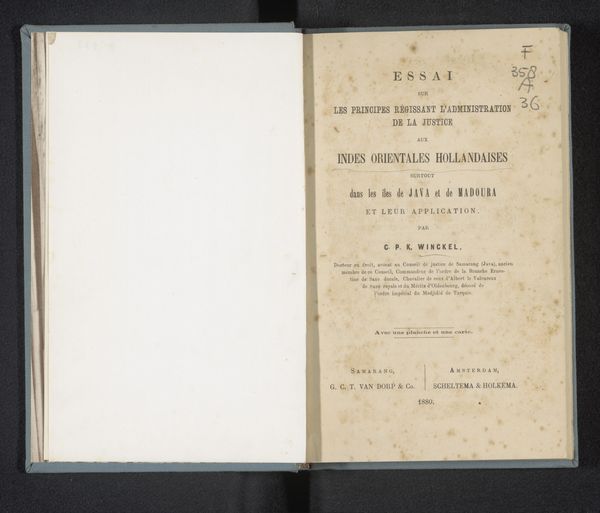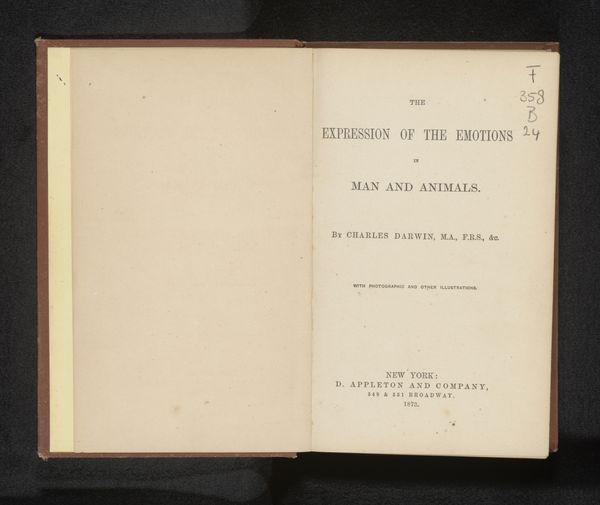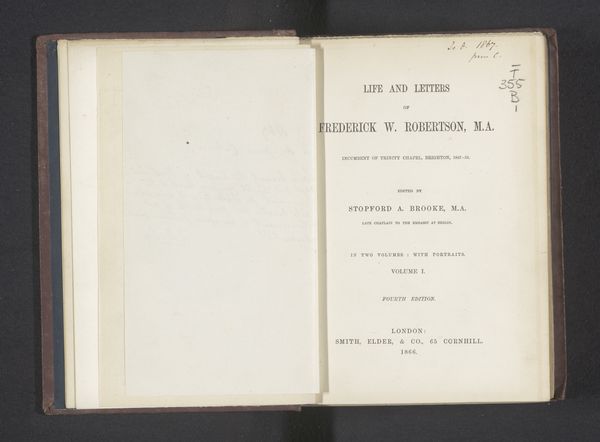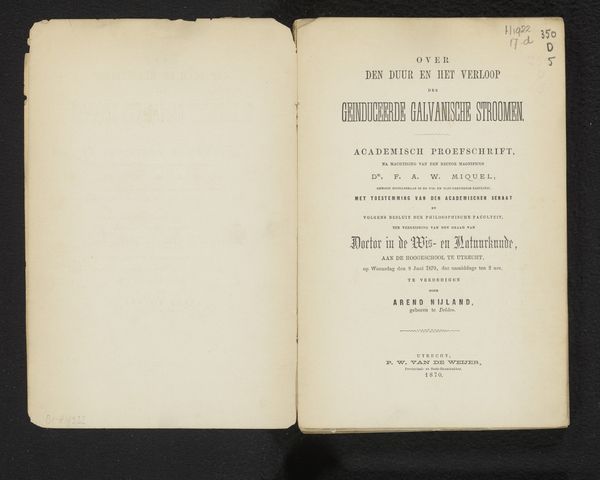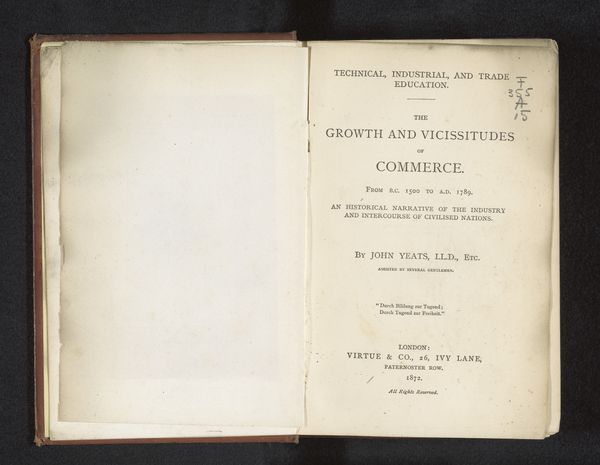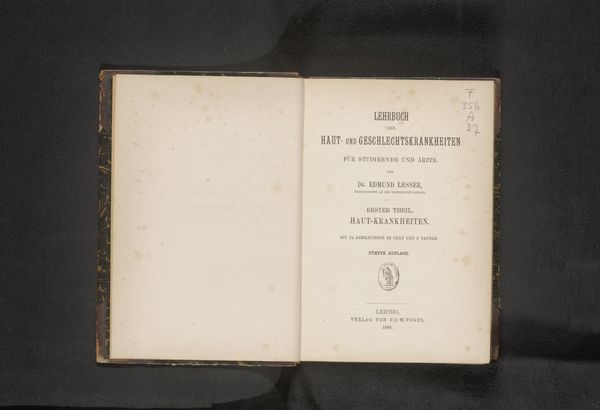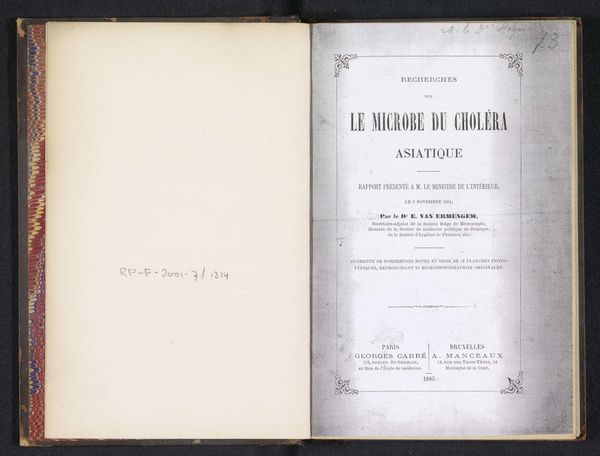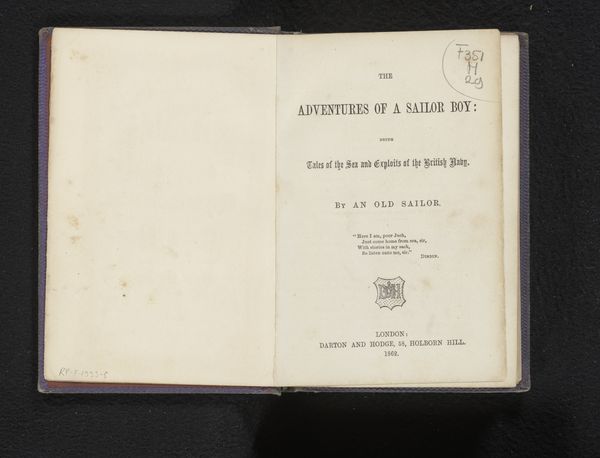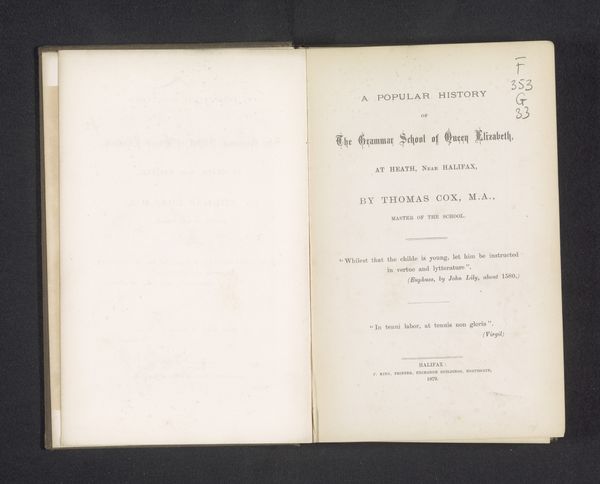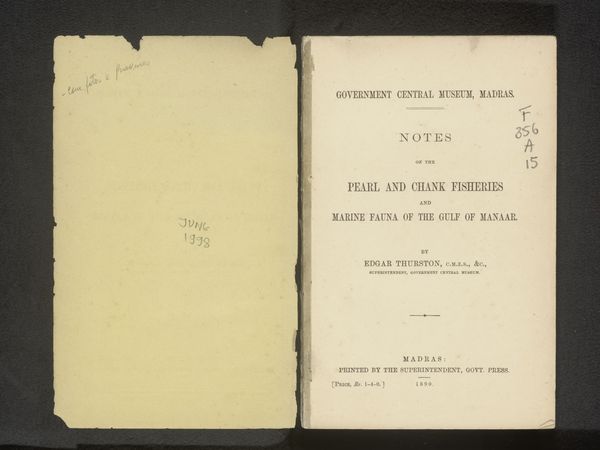
print, paper
#
aged paper
#
homemade paper
#
paper non-digital material
#
paperlike
# print
#
sketch book
#
personal journal design
#
paper
#
personal sketchbook
#
journal
#
sketchbook drawing
#
history-painting
#
sketchbook art
Dimensions: height 194 mm, width 139 mm, thickness 35 mm
Copyright: Rijks Museum: Open Domain
Editor: Here we have "The Expression of the Emotions in Man and Animals" by Charles Darwin, from around 1872. It appears to be a print on aged paper. There's something fascinating about seeing the actual book, it feels so tangible. What jumps out at you when you look at it? Curator: What I find compelling is understanding how Darwin positioned this work within the visual culture of the late 19th century. He wasn't just presenting scientific data; he was consciously engaging with debates about psychology, expression, and the very nature of being human and animal, using the printing press for wide distribution. Consider how photography was changing ideas about realism and representation. Editor: So, he's using a relatively new medium – photography– to back up his theories? Curator: Precisely. But more than that, think about the *politics* of emotion. Whose emotions were considered valid, civilized, worthy of study? The book implicitly reinforces some social hierarchies even as it challenges others by comparing human and animal expressions. How do you think the public received this interplay between science and social norms? Editor: I never thought about it like that. It's not just about science, it's about what society valued and accepted at the time. Curator: Exactly. And books like this played a role in shaping those values. Looking closely at a printed object also offers a lens to consider how the burgeoning publishing industry democratized access to both information and visual rhetoric. We take mass media for granted now, but consider the cultural impact in 1872! Editor: It's amazing to consider that what seems like a straightforward scientific book was part of larger conversations about society, class, and even who gets to be considered 'civilized.' Thanks, this gives me a totally new way to understand the work. Curator: Indeed. It highlights that objects, especially printed matter, carry with them complex historical contexts that still resonate today.
Comments
No comments
Be the first to comment and join the conversation on the ultimate creative platform.
